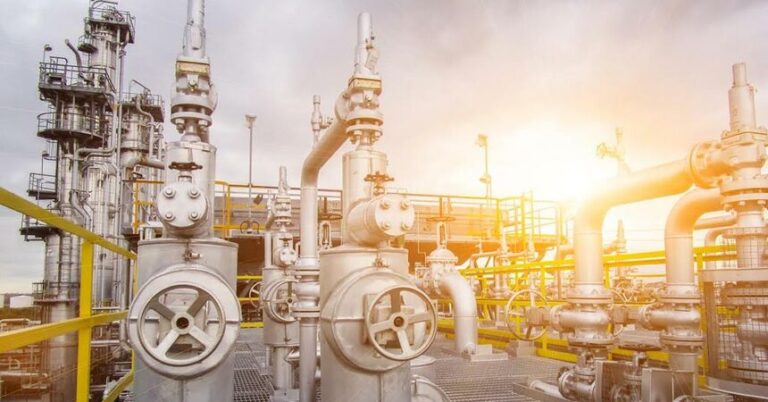In industries where hazardous substances and volatile environments are present, safety becomes a paramount concern. The risk of explosions poses a significant threat to personnel, equipment, and the surrounding environment. To mitigate these dangers, explosion proof technologies have been developed to ensure safety and prevent catastrophic incidents. In this article, we will explore the concept of e-p, its applications, and the importance of implementing such measures in hazardous environments.
It refers to the ability of equipment, devices, or systems to prevent the ignition of flammable gases, vapors, or dust within their enclosure. These specialized solutions are designed to contain any explosion that might occur within the equipment, preventing it from spreading to the surrounding atmosphere.
The Science Behind Explosions
To understand it technology, it is crucial to grasp the science behind explosions. An explosion typically occurs when there is a flammable substance, oxygen, and an ignition source present in a confined space. When the flammable substance comes into contact with the ignition source, it undergoes rapid combustion, releasing a significant amount of energy in the form of heat, light, and shock waves.
Types of Hazardous Environments
Hazardous environments can vary widely, but some common examples include chemical plants, oil refineries, mining sites, gas stations, and grain silos. These environments often contain volatile gases, flammable liquids, combustible dust, or a combination of these hazardous materials.
Common Industries Requiring Explosion-Proof Solutions
Several industries require explosion proof solutions to ensure the safety of their operations. These industries include:
Oil and Gas
Oil and gas facilities, including drilling rigs, refineries, and storage terminals, deal with highly flammable substances. E-p measures are vital to prevent accidents that could lead to fires or explosions.
Chemical and Pharmaceutical
Chemical and pharmaceutical manufacturing plants handle hazardous materials that can pose severe risks. Explosion proof equipment is essential in preventing potential ignition sources and protecting personnel and assets.
Mining
The mining industry operates in environments where combustible gases, dust, and flammable materials are present. This technology is crucial to ensure the safety of miners and the prevention of explosions.
Explosion Proof Equipment and Technologies
This equipment and technologies encompass a wide range of solutions, including:
Enclosures
Explosion-proof enclosures are robust containers that house electrical components and prevent sparks or heat from escaping. These enclosures are designed to withstand and contain an explosion within their structure.
Lighting
In hazardous environments, specializede-p lighting fixtures are used. These fixtures are sealed to prevent any sparks or heat generated by the electrical components from igniting the surrounding atmosphere.
Sensors and Detectors
Explosion-proof sensors and detectors are utilized to monitor and detect the presence of hazardous gases, vapors, or dust. These devices provide early warning signals and enable prompt action to be taken.
Control Panels
Explosion-proof control panels are designed to house electrical controls in hazardous areas. These panels prevent the release of electrical energy that could ignite flammable substances in the vicinity.
The Role of Certification and Standards
Certification and adherence to specific standards are crucial in the field of explosion-proof technology. Regulatory bodies and organizations set standards to ensure the quality, reliability, and safety of e-p equipment. Some well-known certifications include ATEX, UL, and IECEx.
Installation and Maintenance of Explosion-Proof Systems
Proper installation and regular maintenance of e-p systems are vital to ensure their effectiveness and longevity. Only trained and certified professionals should handle the installation and maintenance processes to guarantee compliance with safety regulations.
Benefits
Implementing explosion-proof solutions offers numerous benefits, including:
- Enhanced safety for personnel working in hazardous environments.
- Prevention of explosions, fires, and subsequent damage.
- Protection of valuable equipment and assets.
- Compliance with safety regulations and standards.
- Increased productivity and operational efficiency.
Challenges and Limitations
While e-p solutions are highly effective, there are certain challenges and limitations to consider. These include:
- Initial investment costs associated with explosion-proof equipment.
- Regular maintenance and inspection requirements.
- Limitations in certain extreme environments.
- Continuous advancements in technology necessitating updates and upgrades.
Ongoing Research and Development
Given the ever-evolving nature of industrial processes and safety requirements, ongoing research and development in e-p technologies are crucial. Scientists and engineers are continuously working on improving existing solutions and developing new methods to ensure even higher levels of safety.
Case Studies: Successful Implementation of Explosion-Proof Measures
Several case studies demonstrate the successful implementation of e-p measures in hazardous environments. These real-world examples highlight the importance of adopting appropriate safety measures to prevent accidents and protect lives.
Future Trends in Explosion-Proof Technologies
The future of explosion-proof technologies holds exciting possibilities. Some emerging trends include:
- Integration of IoT (Internet of Things) for real-time monitoring and control.
- Advancements in material science for stronger and more efficient explosion-proof enclosures.
- Implementation of artificial intelligence algorithms for predictive maintenance and risk analysis.
The Cost of Neglecting Safety Measures
Neglecting proper safety measures in hazardous environments can have severe consequences. Accidents resulting from explosions can cause loss of life, environmental damage, and financial repercussions for the organization responsible. Prioritizing safety and investing in explosion-proof solutions is essential to avoid such scenarios.
Training and Education for Personnel
Proper training and education of personnel working in hazardous environments are critical. Training programs should cover the proper use of explosion-proof equipment, emergency response procedures, and general safety guidelines. Well-trained personnel play a vital role in preventing accidents and minimizing risks.
Conclusion
In hazardous environments where explosive substances and volatile conditions exist, the implementation of explosion-proof solutions is of utmost importance. By understanding the science behind explosions, identifying the types of hazardous environments, and exploring the various e-p equipment and technologies available, organizations can safeguard their personnel, equipment, and the environment. It is crucial to prioritize safety, adhere to relevant certifications and standards, and stay updated on advancements in e-p technologies. Investing in the well-being of personnel and the protection of valuable assets ensures a secure working environment and paves the way for a successful and sustainable future.
